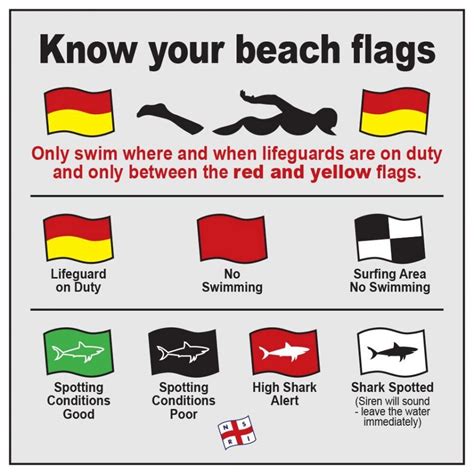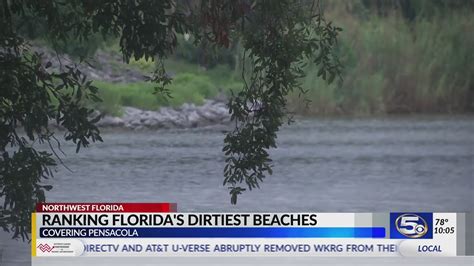
US Beaches: Paradise or Peril? Unsuspecting vacationers heading to America’s shores may face hidden dangers, ranging from rip currents and marine life to water quality issues and extreme heat, necessitating increased awareness and preparedness before hitting the sand.
Millions flock to U.S. beaches annually, seeking respite and recreation. However, these idyllic destinations can harbor significant risks. A comprehensive understanding of potential hazards, coupled with proactive safety measures, is crucial for ensuring a safe and enjoyable beach experience. The allure of sun-kissed sands and ocean breezes often overshadows the inherent dangers lurking beneath the surface and along the shoreline. From treacherous rip currents to harmful algal blooms, and from potent jellyfish stings to the relentless summer heat, a multitude of threats can quickly turn a dream vacation into a nightmare. Ignoring these risks can lead to serious injuries, illnesses, and even fatalities.
Rip Currents: Silent Killers
Rip currents, strong, narrow currents flowing away from the beach, are a leading cause of drownings. According to the United States Lifesaving Association (USLA), rip currents account for over 80% of rescues performed by lifeguards at beaches. These powerful currents can quickly pull unsuspecting swimmers away from shore, exhausting them and increasing the risk of drowning.
“Rip currents are the number one hazard at the beach,” warns the USLA. “They are responsible for more deaths annually than sharks, hurricanes, and tornadoes combined.”
Identifying rip currents can be challenging, but some telltale signs include a channel of churning, choppy water; a difference in water color; a line of foam or debris moving seaward; or a break in the incoming wave pattern. Swimmers caught in a rip current should remain calm and avoid swimming directly against the current. Instead, they should swim parallel to the shore until they are out of the current, then swim back to the beach at an angle. If unable to escape, they should float or tread water and signal for help.
Marine Life: Beyond the Postcard
While encounters with marine life can be fascinating, some creatures pose significant risks to beachgoers. Jellyfish, with their stinging tentacles, are a common nuisance, causing painful welts and allergic reactions. In some cases, particularly with species like the Portuguese man-of-war, stings can be life-threatening.
“Jellyfish stings can range from mild irritation to severe pain and systemic symptoms,” cautions the National Oceanic and Atmospheric Administration (NOAA). “It’s important to be aware of jellyfish warnings and avoid swimming in areas where they are prevalent.”
Other marine hazards include sharks, although attacks are relatively rare; stingrays, which can inflict painful puncture wounds with their barbed tails; and sea urchins, whose spines can cause infections. Stepping on sharp shells or coral can also lead to cuts and abrasions, increasing the risk of infection.
Water Quality: Invisible Threats
The cleanliness of beach water is another crucial factor to consider. Pollution from sewage overflows, agricultural runoff, and industrial discharge can contaminate coastal waters, posing a significant health risk to swimmers and surfers. Exposure to contaminated water can cause a range of illnesses, including gastroenteritis, respiratory infections, and skin rashes.
The Environmental Protection Agency (EPA) monitors water quality at many beaches across the country, issuing advisories when bacteria levels exceed safe limits. However, not all beaches are regularly monitored, and conditions can change rapidly, especially after heavy rainfall. Beachgoers should check local advisories before swimming and avoid swimming in areas where pollution is suspected.
Harmful algal blooms (HABs), also known as red tides, are another growing concern. These blooms occur when excessive nutrients in the water fuel the rapid growth of algae, some of which produce toxins that can harm humans and marine life. Exposure to HAB toxins can cause respiratory problems, skin irritation, and neurological symptoms. Consuming shellfish contaminated with HAB toxins can lead to serious illness.
Extreme Heat: A Silent Danger
Spending long hours on the beach under the scorching sun can lead to heatstroke, sunburn, and dehydration. Heatstroke is a life-threatening condition that occurs when the body’s temperature rises to dangerous levels. Symptoms include headache, dizziness, confusion, nausea, and loss of consciousness. Sunburn can cause painful skin damage and increase the risk of skin cancer. Dehydration can lead to fatigue, muscle cramps, and other health problems.
Beachgoers should take precautions to protect themselves from the heat, including wearing sunscreen with a high SPF, wearing a hat and sunglasses, seeking shade during the hottest part of the day, and drinking plenty of water.
Beach Safety Tips: A Proactive Approach
To minimize the risks associated with beach activities, it is essential to adopt a proactive approach to safety. Before heading to the beach, check the local weather forecast, surf conditions, and water quality advisories. Swim at beaches with lifeguards and always swim within designated areas. Never swim alone, and supervise children closely.
“Always swim near a lifeguard,” advises the USLA. “Lifeguards are trained to identify and respond to hazards, and they can provide valuable information about local conditions.”
Learn to recognize the signs of rip currents and other hazards. If caught in a rip current, stay calm and swim parallel to the shore. Avoid contact with marine life and report any stings or injuries to lifeguards or medical personnel. Protect yourself from the sun by wearing sunscreen, a hat, and sunglasses. Drink plenty of water to stay hydrated.
Specific Regional Risks
The specific risks associated with beaches can vary depending on the geographic location. For example, beaches in the Gulf of Mexico are more prone to jellyfish and harmful algal blooms, while beaches in the Pacific Northwest may have colder water temperatures and stronger currents. Beaches along the Atlantic coast are vulnerable to hurricanes and tropical storms.
- Florida: Known for its beautiful beaches, Florida also faces challenges from rip currents, jellyfish, and harmful algal blooms. The state’s warm waters and abundant marine life attract a variety of species, some of which can be dangerous.
- California: California beaches offer stunning scenery, but they can also be treacherous due to strong currents, cold water temperatures, and the presence of sharks.
- Hawaii: Hawaii’s volcanic beaches are popular with tourists, but they can also be subject to powerful surf and dangerous marine life.
- Gulf Coast: Beaches along the Gulf Coast are susceptible to hurricanes, oil spills, and harmful algal blooms.
Beyond the Obvious: Less-Known Beach Dangers
While rip currents and jellyfish often grab headlines, other less-publicized dangers can also pose a threat to beachgoers. These include:
- Shorebreak: Powerful waves that break directly on the shore can cause serious injuries, especially to the neck and spine.
- Unstable Cliffs: Cliffs along the coastline can be unstable and prone to landslides, posing a risk to those who venture too close to the edge.
- Hidden Debris: Beaches can be littered with sharp objects, such as broken glass, metal scraps, and discarded fishing hooks, which can cause cuts and puncture wounds.
- Lightning Strikes: Beaches are open, exposed areas that are particularly vulnerable to lightning strikes during thunderstorms.
- Theft: Unfortunately, petty theft is a common problem at beaches, so it’s important to keep valuables secure and never leave belongings unattended.
The Role of Technology in Beach Safety
Advancements in technology are playing an increasingly important role in enhancing beach safety. Drones equipped with cameras can be used to monitor beaches for rip currents, sharks, and other hazards. Smart buoys can measure water quality and provide real-time data to lifeguards and beachgoers. Mobile apps can provide information about local conditions, safety tips, and emergency contacts.
“Technology is helping us to better understand and manage beach hazards,” says a spokesperson for a coastal management agency. “By using drones, buoys, and mobile apps, we can provide more timely and accurate information to the public, helping them to make informed decisions about their safety.”
The Economic Impact of Beach Hazards
Beach hazards not only pose a threat to human health and safety, but they can also have a significant economic impact on coastal communities. Beach closures due to pollution or harmful algal blooms can disrupt tourism and recreational activities, costing businesses millions of dollars in lost revenue. Lawsuits resulting from beach-related injuries and fatalities can also be costly.
Investing in beach safety measures, such as lifeguard services, water quality monitoring, and public education campaigns, can help to mitigate these economic losses and protect the long-term viability of coastal communities.
The Importance of Education and Awareness
Ultimately, the key to preventing beach-related accidents and injuries is education and awareness. By educating the public about the potential hazards associated with beaches and promoting safe practices, we can reduce the risk of tragedies and ensure that everyone can enjoy the beauty and benefits of our coastal resources.
“Knowledge is power when it comes to beach safety,” says a representative from a non-profit organization dedicated to promoting water safety. “The more people know about the risks, the better equipped they will be to protect themselves and their families.”
Public service announcements, educational brochures, and online resources can all play a role in raising awareness about beach safety. Schools, community organizations, and government agencies can also partner to provide water safety training and educational programs.
The Future of Beach Safety
As climate change continues to impact our oceans and coastlines, beach hazards are likely to become more frequent and severe. Rising sea levels, increased storm intensity, and warmer water temperatures are all contributing to the growing challenges of beach safety.
To address these challenges, we need to invest in research and development to better understand and predict beach hazards. We need to develop innovative technologies and strategies to mitigate the risks and protect beachgoers. And we need to continue to educate the public about the importance of beach safety.
By working together, we can ensure that our beaches remain safe and enjoyable places for generations to come.
FAQ: US Beach Safety
-
What is a rip current, and how do I identify one?
A rip current is a strong, narrow current flowing away from the beach. Identifying signs include a channel of churning, choppy water; a difference in water color; a line of foam or debris moving seaward; or a break in the incoming wave pattern. It is crucial to note these signs before entering the water. The USLA highlights that rip currents are the primary hazard at beaches, causing more deaths than sharks, hurricanes, and tornadoes combined.
-
What should I do if I get caught in a rip current?
If caught in a rip current, remain calm and do not swim directly against the current. Swim parallel to the shore until you are out of the current, then swim back to the beach at an angle. If you cannot escape, float or tread water and signal for help. According to the USLA, attempting to swim against the current will only exhaust you, increasing the risk of drowning.
-
How can I protect myself from jellyfish stings?
Be aware of jellyfish warnings and avoid swimming in areas where they are prevalent. If stung, rinse the affected area with vinegar (if available) for at least 30 seconds. Do not rub the area or apply fresh water, as this can worsen the sting. Seek medical attention if you experience severe pain, difficulty breathing, or other systemic symptoms. NOAA advises caution in areas known to have jellyfish and recommends wearing protective clothing in such areas.
-
What are harmful algal blooms (HABs), and how do they affect beachgoers?
Harmful algal blooms (HABs), also known as red tides, occur when excessive nutrients in the water fuel the rapid growth of algae, some of which produce toxins. Exposure to HAB toxins can cause respiratory problems, skin irritation, and neurological symptoms. Consuming shellfish contaminated with HAB toxins can lead to serious illness. Avoid swimming in areas with visible algal blooms and heed local advisories.
-
How can I protect myself from heatstroke and dehydration while at the beach?
Wear sunscreen with a high SPF, wear a hat and sunglasses, seek shade during the hottest part of the day, and drink plenty of water to stay hydrated. Avoid strenuous activities during peak sun hours. Heatstroke is a life-threatening condition that requires immediate medical attention. Symptoms include headache, dizziness, confusion, nausea, and loss of consciousness. Staying hydrated and avoiding prolonged exposure to the sun are key preventive measures.
-
What are the water quality risks at beaches, and how can I stay safe? Water quality can be compromised by sewage overflows, agricultural runoff, and industrial discharge, leading to contamination by bacteria and other pathogens. Exposure to contaminated water can cause gastroenteritis, respiratory infections, and skin rashes. Check local advisories before swimming and avoid swimming in areas where pollution is suspected, especially after heavy rainfall. The EPA monitors water quality at many beaches and issues advisories when bacteria levels exceed safe limits.
-
Are there specific beaches known to be more dangerous than others in the US? While danger levels can vary based on current conditions, some areas consistently face specific risks. Florida beaches are prone to rip currents, jellyfish, and harmful algal blooms due to warm waters and abundant marine life. California beaches can be treacherous due to strong currents, cold water temperatures, and the presence of sharks. Beaches along the Gulf Coast are susceptible to hurricanes, oil spills, and harmful algal blooms. Always check local warnings and conditions before entering the water.
-
How effective are lifeguards in ensuring beach safety? Lifeguards are highly effective in ensuring beach safety. They are trained to identify and respond to hazards, perform rescues, and provide valuable information about local conditions. Swimming near a lifeguard significantly reduces the risk of drowning and other beach-related accidents. The USLA emphasizes the importance of swimming at beaches with lifeguards and following their instructions.
-
What role does technology play in improving beach safety? Technology is playing an increasing role in enhancing beach safety. Drones equipped with cameras can monitor beaches for hazards like rip currents and sharks. Smart buoys measure water quality in real time. Mobile apps provide access to local conditions, safety tips, and emergency contacts. These advancements provide timely and accurate information to the public and lifeguards, aiding in informed decision-making.
-
Beyond swimming, what are other common injuries reported at beaches? Beyond swimming-related incidents, common injuries include cuts from sharp objects like broken glass or shells, injuries from shorebreak waves, sunburns, and heat-related illnesses. Unstable cliffs can cause landslides, and lightning strikes pose a risk during thunderstorms. Petty theft is also a concern, requiring beachgoers to secure their valuables.
-
What steps can coastal communities take to improve beach safety for tourists and residents? Coastal communities can improve beach safety by investing in lifeguard services, implementing regular water quality monitoring, launching public education campaigns, and utilizing technology for hazard detection and communication. Maintaining clean beaches by removing debris and providing safe access points are also crucial. Local governments should enforce regulations that protect both beachgoers and the environment.
-
What is shorebreak, and why is it dangerous? Shorebreak refers to powerful waves that break directly on the shore. These waves can cause serious injuries, particularly to the neck and spine, as people are often caught off guard and slammed into the sand. It is important to assess wave conditions before entering the water and to exercise caution near the shoreline, especially during high surf.
-
Are there any specific regulations I should be aware of before visiting a US beach? Beach regulations vary by location but often include rules regarding alcohol consumption, glass containers, pets, bonfires, and parking. Some beaches may have restrictions on swimming during certain times or in specific areas. Check the local regulations posted at the beach entrance or on the local government’s website to avoid fines or other penalties.
-
How does climate change impact beach safety? Climate change exacerbates beach hazards through rising sea levels, increased storm intensity, and warmer water temperatures. Rising sea levels contribute to coastal erosion and flooding, while stronger storms increase the risk of rip currents and storm surges. Warmer water temperatures can promote the growth of harmful algal blooms and increase the range of certain marine species, including jellyfish.
-
What is the best way to stay informed about beach conditions and safety advisories? The best way to stay informed is to check the local weather forecast, surf conditions, and water quality advisories before heading to the beach. Look for postings at the beach entrance or on the local government’s website. Follow local news outlets and social media accounts for up-to-date information. Many beaches also have mobile apps that provide real-time data on conditions and safety alerts.
-
Can wearing water shoes protect me from marine hazards at the beach? Water shoes can offer some protection from sharp objects like shells, rocks, and broken glass, as well as from some marine life like sea urchins. However, they may not protect against all hazards, such as jellyfish stings or stingray barbs. Choose water shoes with thick soles for better protection and be aware of your surroundings, even when wearing them.
-
What are the potential health risks of swimming in ocean water? Swimming in ocean water can expose you to bacteria, viruses, and parasites that can cause illnesses such as gastroenteritis, respiratory infections, and skin rashes. The risk of these infections is higher in areas with poor water quality, especially after heavy rainfall or near sewage outfalls. Avoid swallowing ocean water and shower after swimming to minimize your risk.
-
How can I help prevent beach pollution and protect the environment? You can help prevent beach pollution by properly disposing of trash, recycling whenever possible, and avoiding single-use plastics. Pick up any litter you see on the beach, even if it is not yours. Support local initiatives that promote beach cleanups and environmental conservation. Report any pollution you observe to the appropriate authorities.
-
What type of first aid kit should I bring to the beach? A basic first aid kit for the beach should include bandages, antiseptic wipes, pain relievers, sunscreen, insect repellent, and a sting relief product (such as vinegar or a sting treatment spray). Consider adding items specific to your needs, such as allergy medication or motion sickness remedies. Keep the kit in a waterproof bag to protect it from the elements.
-
Are there any specific considerations for children’s safety at the beach? Children require extra supervision at the beach. Always supervise children closely, especially near the water. Teach them about beach safety rules, such as not swimming alone and staying near a lifeguard. Use child-safe sunscreen and reapply frequently. Keep children hydrated and provide them with shade during peak sun hours. Consider using flotation devices for young children and those who are not strong swimmers. Never let children play near shorebreak or unstable cliffs.









